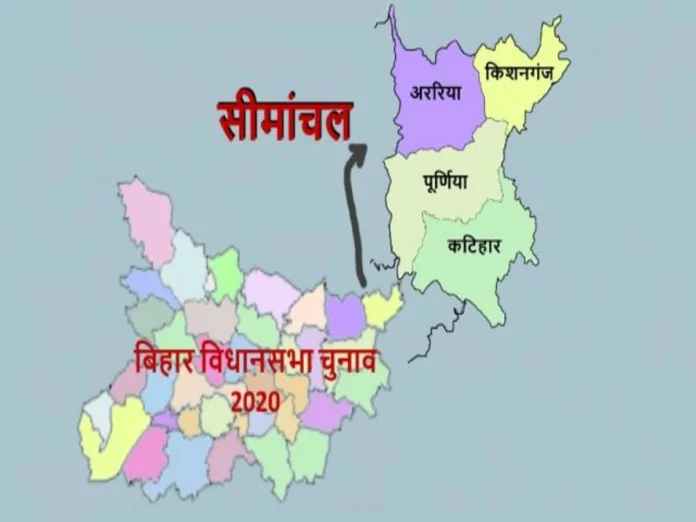-Sami Ahmad & Syed Khalique Ahmed
PATNA, Bihar — The Seemanchal region of Bihar—comprising Kishanganj, Araria, Purnea, and Katihar—is facing renewed vilification by political groups and sections of the media, following the Election Commission of India’s (ECI) announcement of a Special Intensive Revision (SIR) of the state’s voter list on June 24. This region, home to a large Muslim population, is once again being targeted through unsubstantiated allegations of “illegal foreign immigrants” and “Aadhaar oversaturation”, as per a report by the India Tomorrow.
The narrative gained momentum after the Supreme Court directed the ECI to consider Aadhaar cards as valid proof for voter registration. This was not originally among the 11 documents listed by the ECI for the SIR process. Since then, several BJP leaders and right-wing media outlets have alleged that Aadhaar cards in the four districts outnumber their population, insinuating mass infiltration from Bangladesh and the existence of a large number of illegal immigrants—without credible evidence.
Shockingly, the ECI echoed these claims in its official communication, drawing criticism from opposition leaders who accused the Commission of aligning with the BJP’s polarizing agenda. Critics argue that the ECI’s data comparisons rely on outdated 2011 Census figures, ignoring population growth over the last 14 years—especially in the absence of a new census.
While “oversaturation” of Aadhaar cards is cited to target Muslim-majority districts, official data from the Unique Identification Authority of India (UIDAI) shows that almost all districts in Bihar—regardless of religious demographics—have Aadhaar saturation levels exceeding 100%, except Jehanabad (97%).
For example, Aadhaar saturation in Kishanganj stands at 126%, in Katihar and Araria at 123%, while districts like Gopalganj and Sheikhpura record 115% and 118% respectively. This trend is seen across the state but is selectively highlighted in Muslim-concentrated areas, raising concerns of communal bias.
Deputy Chief Minister Samrat Chaudhary recently claimed over two lakh applications for domicile certificates were received from Seemanchal in the first week of July alone, further stoking fears. AIMIM state president and MLA Akhtarul Iman called these allegations baseless, explaining that due to poverty, low literacy, and frequent natural disasters, many people lack documents like passports or matriculation certificates, necessitating new domicile applications.
Congress MP Dr. Mohammad Jawed also defended the residents, asserting that they are simply trying to secure their voter rights—not perpetrate fraud.
Experts and political analysts believe the “Aadhaar scam” narrative is designed to suppress the region’s anti-NDA vote base ahead of the 2025 Bihar Assembly elections. Trinamool Congress leader Mahua Moitra and other opposition figures accused the BJP of trying to portray Muslims as outsiders to polarize the electorate.
The Supreme Court, while declining to halt the SIR on July 10, instructed the ECI to accept Aadhaar, voter ID, and ration cards as valid documents. It also placed the onus on the ECI to justify any rejections, providing some relief to vulnerable communities.
However, fears remain high in Seemanchal. The ECI’s decision to permit Electoral Registration Officers to flag “suspected foreign nationals” has raised the spectre of arbitrary targeting in these border districts.
Opposition leaders, including Congress’ Rahul Gandhi, RJD’s Tejashwi Yadav, and AIMIM’s Asaduddin Owaisi, have collectively described the SIR as a veiled attempt to implement the National Register of Citizens (NRC) in Bihar. They claim it disproportionately affects Seemanchal’s population—potentially disenfranchising up to two crore voters across the state.
As the SIR process unfolds and political temperatures rise, the residents of Seemanchal now face the twin challenge of defending their citizenship and preserving their democratic rights amid increasing communal polarization.




